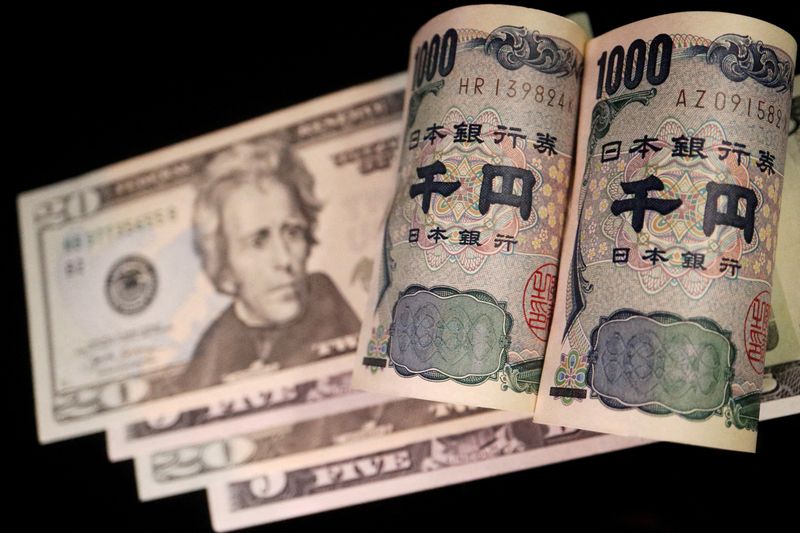By Saqib Iqbal Ahmed
NEW YORK (Reuters) -The U.S. dollar advanced against a basket of currencies on Friday as the latest batch of data on business activity from around the globe highlighted the superior position of the United States relative to other major economies.
S&P Global (NYSE:SPGI) said its flash U.S. Composite PMI index, which tracks the manufacturing and service sectors, dipped to a reading of 50.1 in September from a final reading for August of 50.2. September's result was barely above the 50 level that separates expansion and contraction.
Still, the U.S. economy so far this year has defied projections for sliding into a recession that most economists had expected would be triggered by the Federal Reserve's aggressive interest rate increases aimed at quelling inflation.
The data comes on the heels of disappointing data from Europe, which showed that economic activity in France fell much more quickly than expected in September.
Separate survey data covering the whole euro zone showed that the economy likely contracted in the third quarter.
"The U.S. is continuing to outpace the rest of the world and I think it will continue to do so for some time," Michael Brown, market analyst at Trader X, said of the U.S. data.
"Unless we see a sustained pickup in growth in the rest of DM (developed markets), I struggle to take a bearish view on the buck over the medium-term, as the FX market's focus increasingly shifts to which central bank will spend the longest time at its terminal rate," Brown said.
The U.S. dollar index - which measures the currency against six major counterparts - was 0.2% higher at 105.6 after having risen as high as 105.78 earlier in the session. That puts the index on pace for a weekly gain of about 0.3%, its 10th straight week of gains, its longest winning streak in nearly a decade.
The U.S. central bank needs to raise interest rates further to control inflation in a "timely way," Federal Reserve Governor Michelle Bowman said on Friday in remarks that sketched out a hawkish argument based on a potential rise in energy prices and a possibility the inflation battle may take years to complete.
The Federal Reserve left interest rates at 5.25% to 5.5% on Wednesday but stressed that it would hold them at that level for as long as needed to push inflation back to 2%.
The yen fell on Friday after the Bank of Japan (BOJ) kept interest rates in negative territory days after the Federal Reserve signaled U.S. borrowing costs would stay high, piling pressure on the Japanese currency.
The BOJ held interest rates at -0.1% on Friday and reiterated its pledge to keep supporting the economy until it is confident inflation will stay at the 2% target.
"We have yet to foresee inflation stably and sustainably achieve our price target," BOJ Governor Kazuo Ueda told a press conference.
The yen dropped as low as 148.42 to the dollar, nearing the 150-mark at which analysts have said government intervention to prop up the currency is likely. The dollar was last up 0.53% at 148.375 yen.
"I think it's rather dovish, and that's why we've seen the yen go past 148," said Alvin Tan, head of Asia FX strategy at RBC Capital Markets.
Speculation that Tokyo could intervene to support the yen gathered steam. Japan's finance minister, Shunichi Suzuki, said on Friday he would not rule out any options, warning against a yen sell-off that would hurt the trade-reliant economy.

Meanwhile, sterling was 0.47% lower at $1.2237 after data showed that the UK economy slowed sharply in September and is likely on the brink of recession.
It was near the roughly six-month low of $1.22305 it hit on Thursday when the Bank of England (BoE) halted its long run of interest rate increases, a day after Britain's fast pace of price growth unexpectedly slowed.